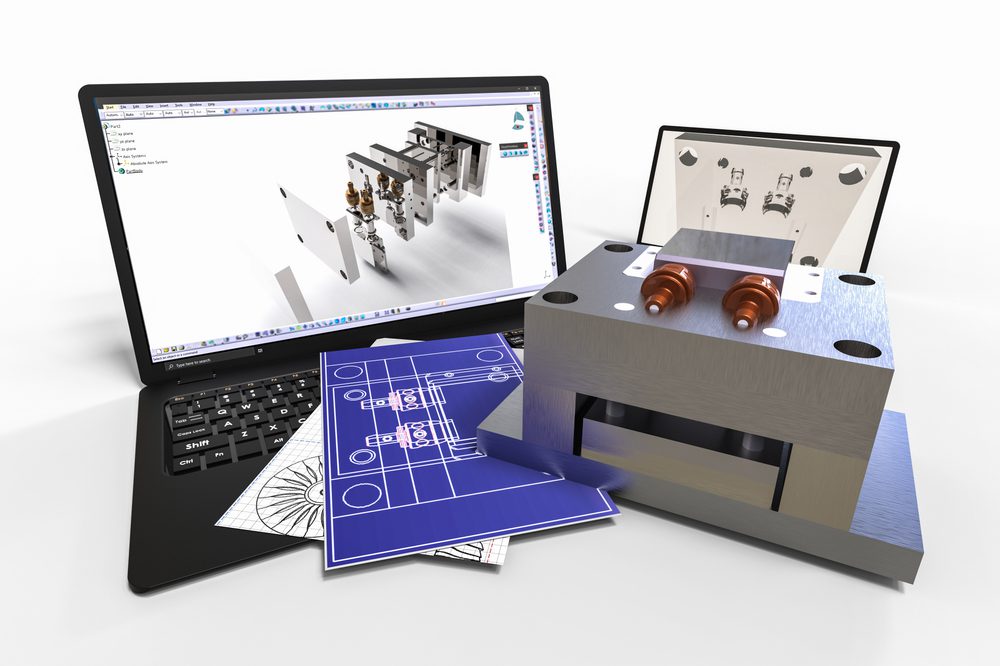Mold making is the process of creating a mold, which molders can use to develop several products. Molds are usually made by either casting material over a form or building up layers of clay or other material to create the desired shape.
The process is vital in manufacturing because it takes designers’ knowledge and experience and translates it into something physical.
Besides, it’s not just limited to one specific type of mold manufacturing. Mold makers are in high demand across industries like aerospace, automotive, railroad, toy production, medical equipment production, product development for consumer goods, and more.
The Mold Making Process
The process is an integral part of the production process for many manufactured products. It typically involves gathering detailed design specifications, creating a mold, producing it to meet design specifications, and finally using it to produce parts.
There are multiple mold making uses in various industries because it can produce intricate designs. It uses high degrees of complexity that are not easy to create through other manufacturing processes.
There are two main types of molds:
- Low-pressure injection molding, and
- Metal injection molds
The steps involved in this process include:
1) Gather Detailed Design Specification
This may be the most crucial step in the whole process, but it is also the simplest. It involves outlining each step in your design. Here are the steps to consider:
- How many mold design pieces are you making?
- What type of material are you designing with?
- What size should each piece be?
- What will be part of each piece?
- How does each piece connect to another?
- What will the color scheme look like for this project, or if it’s not a color project, describe the parts necessary for decoration?
2) Create a Mold
The idea behind creating a mold is to create a shape that will house the casting material. You can use molds to make plastic, metal, and ceramic products only.
You can create a mold by casting, pouring, or carving. You can make it by taking an existing object and copying its shape or sculpting it from scratch.
There are four main types of molds: plaster, sand castings, die castings and lost wax. Each of these has different processes having its pros and cons.
3) Manufacture the Mold to Meet Set Specifications
In this stage, you design a mold for manufacturing a product. This step includes the following tasks:
- Design a mold to match the desired product
- Make a model of the initial design into a complete prototype
- Modify or add enhancements to the plan if necessary
- Design and make the important fixtures, dies, jigs, etc.
- Manufacture the mold from steel plates to meet design specifications
4) Use the Mold to Produce Parts
After all three steps, this is the final stage to produce the desired shape. This is possible using various techniques, such as machining, extrusion, injection molding, compression molding, and die casting.
This process starts with designing the desired part shape on CAD software. The design needs to translation into a 3D model that you can cut on a CNC machine or cast into liquid metal with clay molds.
Once the shape is complete, it’s time to produce molds for both halves of the final product. A positive and negative appear from this design to create the cavity inside, which will form either an injection-molded plastic part or molten metal part during production.
[https://www.pexels.com/photo/action-adult-boots-boxes-209230/]
Different Types of Mold Set Layouts
There are many types of mold set layouts, and they vary depending on the kind of production and design. You can use some structures for injection and compression molding, while others only work for one process.
The classification of the mold layouts is either vertical or horizontal by the orientation of the molds.
Vertical mold layouts are more common in production lines that use gravity to feed the products into the molds. These layouts are also called gravity-assisted mold layouts.
Horizontal mold layouts are the most common for rotational equipment with an overhead traveling crane or screw-type conveyor that feeds products into the molds. These types of setups are also called gravity-independent, push-assisted, or product-feed-independent mold sets.
Types of Mold Set Layouts
1) Face-to-face (FF) – The simplest layout has two identical molds placed face to face.
2) Back-to-back (BB) – This is a back-to-back layout when you position one mold behind the other. You can use this when molding of the parts has to be in a direction that does not allow for a side-by-side layout or an obstruction near one of the molds.
3) Side by side (SS) – The SS-type layout has two rows of molds, with the front row containing one set of molds and the back row containing another set. This type can reduce overall cycle time by cutting down unnecessary wait times for mold changeovers between assortments.
If looking for more mold design services, reach us today! We are a low pressure injection molding company that offers mold design to our customers in addition to injection molding services.
